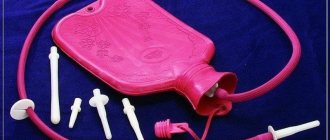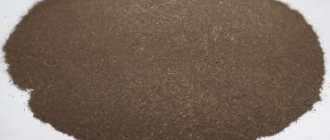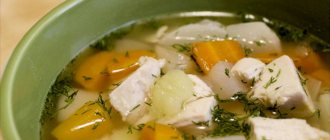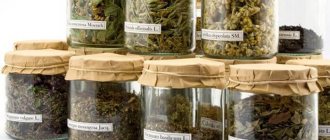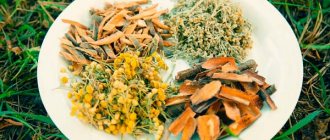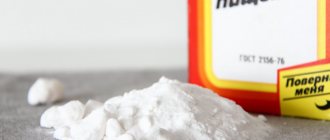Any disease becomes a serious challenge for the patient and loved ones. Often the disease “knocks” a person out of the usual rhythm of life for a long time or changes it. Some patients have to devote many months to the process of restoring their health and undergo treatment in a hospital setting. At this time, the clinic becomes a second home, and the health workers who help fight the disease become a second family.
In medical institutions, work is structured according to a certain scheme and rules. Medical personnel of various levels and qualifications are involved in caring for patients. The main and irreplaceable assistants to a doctor are nurses.
What is the nursing process?
The set of methods for organizing the work of a nurse (or nurse) in a treated institution represents the nursing process, the purpose of which is to create conditions for effective treatment and a speedy recovery of the patient.
During treatment, the patient needs support and attention, monitoring by the health worker over the patient’s compliance with the daily routine, diet, taking medications on time, undergoing therapeutic procedures and activities. The interaction of medical personnel with the patient’s relatives is an integral element of treatment and restoration of health.
The nursing process consists of a number of stages.
Nursing examination
The goal is to identify disturbances in the functioning of the body and determine the patient’s needs.
The examination begins with a survey, on the basis of which passport data is recorded and information about the patient’s social status, profession and lifestyle is collected. Close attention is paid to complaints and feelings regarding the symptoms of the disease. Information about chronic diseases and allergic reactions to medications is recorded.
- An external examination of the body and skin is carried out.
- Pulse, blood pressure, body temperature are measured.
- Attention is paid to the state of consciousness, sensory organs and memory.
- Laboratory and instrumental studies are carried out.
Based on the nursing examination data, conclusions are drawn that:
- what assistance is required to provide the patient to alleviate the condition;
- what to do to meet needs;
- what difficulties are likely in the process of treatment and care for the patient.
The data is entered into the nursing examination card (nursing medical history). Unlike a medical examination, a nursing examination is carried out to provide the patient with the required care and treatment, and not to establish a diagnosis.
Nursing diagnostics
Nursing diagnosis is based on the patient’s complaints and feelings and becomes the basis for determining ways to care for the patient. Depending on the signs that worry the patient, ways to alleviate the condition are found, risks associated with the disease are eliminated, and priority measures are determined to ensure comfort and safety.
A nursing diagnosis includes a conclusion about the patient’s ability to care for himself, the emotional and psychological state, the degree of pain and other sensations of the patient.
Creating a patient care plan
Based on the data obtained, an action plan is drawn up that coordinates the work of the department - communication with special services, shifts of medical staff, creation of conditions to prevent the occurrence of critical situations.
The description of each goal includes the wording, date and time of implementation, method of achievement (how and with what help). The goals set should appear realistic and achievable, be within the nurse’s competence, and be agreed upon with the patient.
Implementation of the care plan - the actions of the nurse to provide care to the patient and provide treatment. The nurse's actions typically include the following:
- Providing emergency measures to save the patient’s life.
- Performing manipulations - injections, IVs, dispensing medications according to the scheme.
- Education of the patient and loved ones, consultations regarding nutrition and hygiene.
- Providing psychological support.
- Prevention of complications and prevention of critical situations.
- Creating comfortable conditions for sleep and relaxation.
- Organization of leisure time.
Assessing the quality and effectiveness of care
At this stage, the patient’s condition indicates the effectiveness and level of care and medical assistance. If the goals at the stage are not achieved, the plan is reviewed and adjustments are made.
Nursing process for pancreatitis
Patients presenting to the clinic with symptoms of pancreatitis are often in serious condition. Disturbances in the functioning of the pancreas are accompanied by excruciating pain and other unpleasant symptoms. Pancreatitis sometimes develops as a consequence of addiction to alcohol; the nursing process for pancreatitis differs in its features.
The main stages and features of caring for patients with pancreatitis
The nursing process in acute pancreatitis reveals peculiarities due to the occurrence of emergency conditions of the patient (fainting, collapse), and in some cases it is necessary to resort to the help of the victim’s relatives.
The first stage - nursing examination for pancreatitis is carried out in accordance with the methodology and includes:
- Examination of the patient and conversation with him and relatives.
- Measuring body temperature, blood pressure, pulse rate.
- Blood sampling and urine collection for further laboratory testing.
- Entering the necessary data into the nursing medical history.
The second stage of the nursing process - nursing diagnosis identifies the patient's symptoms:
- Severe abdominal pain.
- Fever, chills.
- Nausea and bouts of vomiting.
- Intoxication of the body and dyspeptic syndrome.
- Bloating, belching, diarrhea.
- Sleep disturbance, excitability.
- Weakness.
- Confusion and fear.
Third stage. Based on the diagnostics performed and the obtained indicators, a nursing care plan for the patient is drawn up. When developing and implementing a plan, the nurse uses special medical literature and manuals in the form of a diagram:
- Standards for the treatment of acute pancreatitis.
- Standards for the treatment of chronic pancreatitis.
- Standards of manipulations and procedures.
- Patient care standards.
- Protocol for the treatment of chronic pancreatitis.
- Protocol for the management of patients with acute pancreatitis. Practical recommendations.
The list of documents is based on many years of research and experience in treating the disease; the described schemes have been tested and are effective in use. This literature contains detailed instructions, descriptions and recommendations, which is convenient for doctors and clinic staff.
Article on the topic: “Nursing care for diseases of the pancreas”
“Nursing care for diseases of the pancreas”
Currently, one of the main medical problems is the increasing level of development of pancreatic diseases, such as acute and chronic pancreatitis, cystic fibrosis, diabetes, and cancer. So, according to statistics, every tenth adult resident of large Russian cities suffers from chronic pancreatitis.
Scientific research over the past 30 years indicates a doubling of the incidence of chronic pancreatitis. This is due to improved methods of diagnosing the disease, an increase in cases of gastrointestinal diseases, including diseases of the biliary tract and duodenum as background for pancreatitis. And also with an increase in alcohol consumption, increased exposure to unfavorable environmental factors, which, influencing the cell genome, weaken various protective mechanisms.
The disease is most often observed in adults. It was also noted that men suffer from pancreatitis 2 times more often than women. The disease is often observed in pregnant women and during the postpartum period. Chronic pancreatitis is a very “cunning” disease because it has no specific symptoms.
Back at the beginning of the twentieth century. Pancreatitis was considered a rare disease and was usually discovered only during surgery or at autopsy. And at present, it is quite difficult to judge the actual frequency of this pathology, since until recently there were no accurate diagnostic methods that would provide reliable intravital diagnosis of this serious disease. Many researchers believe that CP is more common than clinically detected.
A significant role in the genesis of chronic pancreatitis is assigned to diseases of the duodenum, allergic reactions and
bacterial factor. Extremely high clinical significance is associated with the risk of complications and mortality.
Despite advances in diagnosis and pharmacotherapy, it is quite difficult to identify the disease: the clinical picture sometimes resembles the symptoms of other diseases, even myocardial infarction. Therefore, the problem of chronic pancreatitis today is one of the most complex and pressing in gastroenterology. To date, the problem of local immune changes in the mucous membrane of the duodenum, as well as factors in the development and progression of chronic duodenal inflammation in patients with chronic pancreatitis, remains poorly understood.
In this connection, it is relevant to study the morphofunctional disorders of the duodenal mucosa in patients with chronic pancreatitis, as well as the search for additional etiological factors in the development of this disease for timely diagnosis and optimal treatment tactics for patients.
Thus, all of the above confirms the relevance of the chosen topic and the need to study disorders of immune defense mechanisms and their pathogenetic drug correction.
Pancreatitis, despite the cause that caused it, has various clinical manifestations and course. A carefully collected medical history and a high degree of suspicion about the possible development of pancreatitis help to make a correct diagnosis in patients with chronic pancreatitis.
The clinical picture in patients with chronic pancreatitis is dominated by pain, the localization depends on the predominant damage to one or another anatomical part of the pancreas. An elevated serum amylase level, although not a specific test for pancreatitis, confirms the diagnosis.
The diagnosis is confirmed on the basis of laboratory data, radiography and retrograde cholangiopancreatography, as well as ultrasound. Computed tomography is the method of choice in assessing the severity and extent of pancreatitis, as well as in identifying many of the complications of this disease.
High quality medical care can lead to an improvement in the patient’s overall quality of life. A huge role in the implementation of measures to improve the health of the nation belongs to nurses, whose education and experience allow them to provide high-quality nursing services.
Nursing care for acute and chronic pancreatitis
Specific actions of the nurse to care for the patient in the first days after admission to the clinic are aimed at alleviating the condition, ensuring rest for the pancreas, and relieving pain.
Nursing intervention for acute pancreatitis
Treatment of acute pancreatitis begins with urgent measures to save a person’s life. The patient is urgently taken to the clinic, where he is prescribed bed rest and provided with complete rest.
Nurse's action plan during the treatment of acute pancreatitis:
- Application of cold to the epigastric region.
- Wrapping up a patient with chills.
- Administration of painkillers.
- Control of drinking regime and adherence to complete hunger in the first 2-3 days after the attack.
- Conducting a conversation with the patient and relatives about the need to follow a diet in the future and give up bad habits.
Study of nursing care technologies for pancreatitis
Observation of a patient with pancreatitis being treated in the surgical department of the Valuyskaya Central District Hospital made it possible to study the organization and technology of nursing care for this pathology.
On February 1, 2022, A.A. Ivanov was admitted to the therapeutic department of the Valuyskaya Central District Hospital. 46 years old with complaints of persistent pain in the epigastrium, aggravated by lying on the back, bloating, flatulence, nausea, vomiting that does not bring relief, pasty, shiny, profuse stools, weakness, lack of appetite. The pain appeared after eating fatty foods and alcohol.
During the first stage of the nursing process, an anamnesis was collected and a nursing examination was performed.
From the anamnesis it was found that in 2022, after a blunt abdominal injury, a splenectomy was performed for a ruptured spleen. In the postoperative period, acute pancreatitis developed. Since 2022, the pain has become almost constant, due to the fact that the patient did not strictly follow dietary recommendations (excluding fat and limiting meat foods, categorical non-consumption of alcoholic beverages), after which a diagnosis of chronic pancreatitis was established. During 2022, he was hospitalized twice for relapse of chronic pancreatitis.
A physical examination revealed decreased nutrition, decreased skin turgor and moisture, and pale skin with a dirty gray tint. On palpation, pain in the epigastrium is determined; palpation of the abdomen is accompanied by pain radiating to the back, left hypochondrium, and shoulder girdle. The patient is agitated and worries about separation from loved ones.
At stage II of the nursing process, when forming a nursing diagnosis, we identified the patient's problems.
1. The patient's real problems:
1) priority:
- acute pain in the epigastrium and left hypochondrium due to inflammation of the pancreas, nausea due to intoxication, uncontrollable vomiting;
- secondary problems - lack of appetite due to pain in the epigastric region, psycho-emotional discomfort due to separation from loved ones, decreased performance due to hospitalization, decreased motor activity due to weakness.
2) potential problems:
- the risk of developing acute liver failure, pulmonary failure, secondary infection (purulent pancreatitis, sepsis, pancreatic fistulas), development of peritonitis, pancreatic necrosis, death.
At stage 3 of the nursing process, the correct formulation of the nursing diagnosis allowed the setting of goals.
Short-term goal: pain relief within 3 days. nausea, vomiting. Long-term goal: by the time of discharge, the patient will have no pain, bowel movements will normalize, and no complications will develop.
After setting goals, a nursing care plan was outlined with motivation for each action.
At stage IV, planned nursing interventions were implemented aimed at achieving the set goals.
Specific actions of the nurse to care for the patient in the first days after the patient’s admission to the hospital are aimed at alleviating the condition, ensuring rest for the pancreas, and relieving pain.
1. Creation of a therapeutic and protective regime (bed rest for 3 days) to reduce stress and relieve pain.
2. To relieve pain, dyspeptic disorders, manifestations of exocrine and intrasecretory pancreatic insufficiency:
- cold on the epigastric region, fasting for 3 days, then diet No. 5;
- in drinking mode, mineral or heated water, or rosehip decoction.
3. Drug treatment as prescribed by a doctor - to eliminate the clinical symptoms of the disease.
Cefazolin (1.0 g. Dissolve in 200 ml of 0.9% sodium chloride solution, IV slowly).
Contrical (10,000 units dissolved in 200 ml of 0.9% sodium chloride solution, IV slowly).
Papaverine (2% 2 ml, in ampoules IM 2 ml, 1 time per day).
Famotidine (0.8, 1 tablet 2 times a day).
Venter (1.0, 1 tablet 3 times a day).
4. Clinical and laboratory examination as prescribed by a doctor: OAM, OAC, blood test for residual nitrogen, urine test for diastase, ECG, ultrasound of the abdominal organs.
Independent nursing interventions were performed to ensure treatment effectiveness.
1. Monitoring compliance with bed rest, giving a comfortable position.
2. Creating conditions for good sleep,
3. Psycho – emotional peace. It is important to monitor the patient’s psychological state and, if possible, protect him from worries and worries. Patients do not always respond correctly to doctor’s recommendations; this is due to a lack of information about the disease. This is why conversation with the patient during the treatment process is so important. It is good if he finds out all the details of his disease and how unpleasant the consequences will be in cases of refusal of certain methods of prevention and treatment.
4. Assistance in performing hygiene procedures.
5. Monitoring the patient’s condition (skin, pulse, blood pressure, position in bed, breathing, physiological functions).
6. Timely implementation of medical prescriptions.
7. Teaching the patient diet therapy, monitoring diet compliance, talking with the patient about the role of diet in the treatment of acute pancreatitis. Nursing care for pancreatitis is not only about monitoring the composition of foods, but also ensuring that they are properly prepared. Hot food, food from the refrigerator and large portions are contraindicated. Food must meet all the requirements for such patients. This is one of the main components of the treatment process.
8. Conversation with the patient about the harmful effects of alcohol on the pancreas and maintaining a healthy lifestyle.
Stage V of the nursing process - assessing the effectiveness of nursing care.
On the 2nd day of treatment, vomiting stopped, and on the 4th day of treatment, the pain stopped. By the time of discharge, the symptoms of the disease had stopped, and the patient’s well-being had improved. The goal has been achieved.
Upon discharge, the patient was given nursing advice.
1. The physical activity regimen should be dosed. Physical exercise and sports activities should be limited in the first month after treatment.
2. Continued adherence to the diet. Meals should be frequent (5 - 6 times a day) .
Meals should not be plentiful - you need to take food in small portions. In order to prevent irritation of the gastric mucosa, products should be consumed in pureed form. Meals are prepared based on the principle of “mechanical sparing” of the digestive organs. Food should be consumed exclusively warm. It is preferable to boil or steam the products. It is necessary to increase the consumption of foods containing proteins (fish, meat, cottage cheese), reduce the consumption of carbohydrates (sugar, honey, sweets), and reduce the consumption of fatty foods. Products that have an increased juice-containing effect (cabbage broth, fish and meat broths) should be excluded from the diet. If acute pain occurs, a 1-2 day therapeutic fast is necessary.
3. Careful self-monitoring of the condition is necessary: taking medications, self-massage. In the process of treating patients with acute pancreatitis, special attention is paid to the use of antispasmodics and analgesics, the action of which is aimed at relieving spasms of the intestinal muscles. During attacks of chronic and acute pancreatitis, medications are used to relieve pain.
4. Giving up bad habits.
Thus, during the treatment process, the patient promptly fulfilled all doctor’s orders, followed the diet and department regimen. He followed all the nurse’s recommendations and actively asked questions that interested him, which contributed to the effectiveness of the therapy. During the treatment process, the patient was trained in the basic principles of diet therapy, which is fundamental in the treatment of pancreatitis. Conversations were held about complications and risk factors, which helped to increase awareness of this disease. The patient was motivated to maintain a healthy lifestyle and diet.
Conclusion
Analysis of medical literature and the results of our own research allowed us to draw the following conclusions…………….
Thus, the hypothesis that identifying risk factors and knowledge of nursing care technologies for pancreatitis helps to increase the effectiveness of treatment and prevent complications has been proven.
Bibliography
1. Aripov, U.A. Once again about cholelithiasis and its complications [Text]/ U.A. Aripov // J. Medical Journal. – 2014. No. 1. P. 13-15.
2. Bagnenko, S. F. Guide to emergency medical care [Text] / S. F. Bagnenko, A. G. Miroshnichenko, A. L. Vertkin, M. Sh. Khubutia. - M.: GEOTAR-Media, 2010. - 816 p.
3. Baranovsky, A.Yu. Dietetics. [Text]/: manual: 3rd ed. - St. Petersburg: Peter-Yug publishing house, 2008. - 1024 p.
4. Belousov, A. S. Diagnosis, differential diagnosis and treatment of diseases of the digestive organs [Text] / A.S. Belousov, V.D. Vodolagin, V.P. Zhakov. - M.: Medicine, 2002. - 424 p.
5. Belousov, S.S. Gastroesophageal reflux disease and duodenogastric reflux [Text] / S.S. Belousov, S.V. Muratov, A.M. Ahmad. - Nizhny Novgorod: NGMA, 2005. - 119 p.
6. Diseases of the pancreas: practical work. manual [Text]/ I.V. Maev, Yu.A. Curly. - M.: GEOTAR-Media, 2009. - 730 p.
7. Bratus, V.D. Acute gastric bleeding (differential diagnosis and treatment) [Text] / V.D. I'm brotherly. — 272 p.
8. Vakkasov, M.Kh. Diagnosis and treatment of chronic pancreatitis [Text]/ M.Kh. Vakkasov // Central Asian Medical Journal. — 2014. No. 2. P. 121-124.
9. Valenkevich, L. N. Diseases of the digestive organs. Guide to gastroenterology for doctors [Text]/ L.N. Valenkevich, O.I. Yakhontova. - M.: DEAN, 2006. - 656 p.
10. Introduction to gastroenterology [Text]: textbook. allowance / E.S. Ryss. - M.: SpetsLit, 2015. - 175 p.
11. Internal diseases [Text]: [textbook. for honey universities]: in 2 volumes / R. A. Abdulkhakov, V. G. Avdeev, V. A. Almazov and others; edited by N. A. Mukhina and others - 2nd ed., revised. and additional – T. 1. – Moscow: GEOTAR-Media, 2012. – 324 p.
12. Galimzyanov, F.V. Stages of application of minimally invasive technologies in the treatment of severe forms of pancreatitis [Text]/ F.V. Galimzyanov // In the materials of the IX conference of hepatological surgeons of Russia and the CIS countries. Saint Petersburg. - 2012. - No. 1- P. 194.
13. Gastroenterology and hepatology: diagnosis and treatment [Text]: a guide for doctors / ed. A.V. Kalinina, A.I. Khazanova; Ch. military wedge. hospital named after N.N. Burdenko. – M.: Miklos, 2007. – 600 p.
14. Gastroenterology [Text]: national guide / ed. V.T. Ivashkina, T.L. Lapina. – M.: GEOTAR-Media, 2008. – 700 p.
15. Gastroenterology [Text]: clinical recommendations] / ed. V. T. Ivashkina. 2nd ed. corr. and additional - M.: GEOTAR-Media, 2009. - 124 p.
16. Gastroenterology [Text]: reference. pract. doctor / A.V. Kalinin, I.V. Maev, S.I. Rapoport; under general ed. S.I. Rapoport. – M.: Medpress-inform, 2009. – 312 p.
17. Grigorieva, I.N. Alcoholic pancreatitis [Text]/ I.N. Grigorieva // Gastroenterology. — Consilium medicum application. - 2011. - P. 43 - 45.
18. Gubergrits, N.B. Pain in chronic pancreatitis: clinical and morphological comparisons [Text]/ N.B. Gubergrits // Ros. magazine gastroenterol., hepatol., coloproctol. - 2015.- pp. 58-66.
19. Gurvich, M.M. Diet for diseases of the digestive system [Text]/ M. Gurvich. – M.: GEOTAR – Media, 2006. – 288 p.
20. Ivashkin, V.T. Propaedeutics of internal diseases [Text]: workshop / V.T. Ivashkin, V.K. Sultanov. - St. Petersburg: Peter, 2000. - 384 p.
21. Ivashkin, V.T. Diarrhea syndrome [Text]/ V.T. Ivashkin, A.A. Sheptulin. – 2nd ed., expanded. and processed – M.: GEOTAR-MED, 2002. – 168 p.
22. Ivashkin, V.T. Nutrition for diseases of the digestive system [Text]/ V.T. Ivashkin, V.P. Shevchenko. – M.: GEOTAR-Media, 2005. – 351s
23. Kalinin A.V. Chronic pancreatitis: etiology, classification, clinical picture, diagnosis, treatment and prevention [Text]: textbook / A.V. Kalinin. - M.: TsIUV MO RF, 2012. - 44 p.
24. Clinical recommendations. Gastroenterology [Text]/ ed. V.T. Ivashkina. - M.: GEOTAR-Media, 2008. - 182 p.
25. Komarov, I.F. Internal diseases [Text]/ I.F. Komarov, V.G. Kukes, A.S.Smetnev.M.: “Medicine”, 1990. - 28 - 30 p.
26. Kubyshkin, V.A. Prevention and treatment of chronic pancreatitis [Text]/ V.A. Kubyshkin // Rus. honey. magazine - 2012. - P. 17 - 22.
27. Kucheryavyi, Yu.A. Patient with chronic pancreatitis: management errors, possible causes and solutions [Text]/ Yu.A. Curly // Gastroenterology. — Consilium medicum application. - 2014. - P. 46 - 55.
28. Kucheryavyi, Yu.A. Modern approaches to the diagnosis and treatment of chronic pancreatitis [Text]/ Yu.A. Curly // Diseases of the digestive system. - 2014.- pp. 18 – 24.
29. Maev, I.V. Chronic pancreatitis [Text]/ I.V. Maev, A.N. Kazyulin, Yu.A. Curly. – M.: Medicine, 2015. – 504 p.
30. Mayev, I.V. Theories and hypotheses of the pathogenesis of chronic pancreatitis [Text]/ I.V. Maev // Clinical perspectives of gastroenterology, hepatology. - 2015. - pp. 18 - 26.
31. Minushkin, O.N. Pancreatic diseases. Etiological aspects of the treatment of chronic pancreatitis [Text]/ O.N Minushkin // Consilium medicum. - 2015. - P. 27 - 32.
32. Minushkin, O.N. Chronic pancreatitis: some aspects of pathogenesis, diagnosis and treatment [Text]/ O.N Minushkin // Consilium medicum. - 2012. - P. 23 - 26.
33. Minushkin. HE. Modern principles and algorithms for the treatment of chronic pancreatitis [Text]/ O.N Minushkin // Materia Medica. — 2013. -S. 22 - 26.
34. Minushkin, O.N. Chronic pancreatitis [Text]/ O.N. Minushkin // Kremlin medicine. Clinical Bulletin. - 2014. - pp. 24 - 29.
35. Visual gastroenterology [Text]/ S. Keshav; lane from English S.V. Demicheva; edited by V.T. Ivashkina. – M.: GEOTAR-Media, 2005. – 135 p.
36. Parakhonsky, A.P. Relationship between psychological and somatic disorders in gastroenterological pathology [Text]/ A.P. Parakhonsky // Fundamental research. - 2007. - No. 2 - P. 93-93.
37. Polushkina, N.N. Diagnostic reference book for a gastroenterologist [Text]/ N.N. Polushkina. – M.: AST, 2007. – 671 p.
38. Rational pharmacotherapy of diseases of the digestive system: compendium / ed. V.T. Ivashkina, T.L. Lapina. – M.: Litterra, 2006. – 550 p.
39. Roitberg, G.E. Internal illnesses. Digestive system [Text]: textbook. allowance / G.E. Roitberg, A.V. Strutynsky. - M.: Medpress-inform, 2007. - 556 p.
40. Skripnichenko, D.F. Emergency abdominal surgery [Text] / D.F. Skripnichenko. M: 2008. - 90 - 93 p.
41. Zimmerman, Ya.S. Clinical gastroenterology [Text] / Ya.S. Zimmerman. – M.: GEOTAR-Media, 2009. – 413 p.
42. Shifrin, O.S. Clinical features of chronic pancreatitis in elderly patients [Text] / O.S. Shifrin // RZHGGK. - 2011. - No. 3. — P.35 — 40.
43. Filimonov, R.M. Gastroduodenal pathology and problems of restorative treatment [Text] / R.M. Filimonov. – M.: MIA, 2005. – 391 p.
44. Yakovenko, A.V. Chronic pancreatitis, clinical picture and diagnosis [Text]/ A.V. Yakovenko // Practicing doctor. – 2013 No. 13. — P. 34 — 35.
45. Yakovenko, A.V. Treatment of chronic pancreatitis [Text]/ A.V. Yakovenko // Practicing doctor. – 2013 No. 13.- P. 36 - 37.
Observation of a patient with pancreatitis being treated in the surgical department of the Valuyskaya Central District Hospital made it possible to study the organization and technology of nursing care for this pathology.
On February 1, 2022, A.A. Ivanov was admitted to the therapeutic department of the Valuyskaya Central District Hospital. 46 years old with complaints of persistent pain in the epigastrium, aggravated by lying on the back, bloating, flatulence, nausea, vomiting that does not bring relief, pasty, shiny, profuse stools, weakness, lack of appetite. The pain appeared after eating fatty foods and alcohol.
During the first stage of the nursing process, an anamnesis was collected and a nursing examination was performed.
From the anamnesis it was found that in 2022, after a blunt abdominal injury, a splenectomy was performed for a ruptured spleen. In the postoperative period, acute pancreatitis developed. Since 2022, the pain has become almost constant, due to the fact that the patient did not strictly follow dietary recommendations (excluding fat and limiting meat foods, categorical non-consumption of alcoholic beverages), after which a diagnosis of chronic pancreatitis was established. During 2022, he was hospitalized twice for relapse of chronic pancreatitis.
A physical examination revealed decreased nutrition, decreased skin turgor and moisture, and pale skin with a dirty gray tint. On palpation, pain in the epigastrium is determined; palpation of the abdomen is accompanied by pain radiating to the back, left hypochondrium, and shoulder girdle. The patient is agitated and worries about separation from loved ones.
At stage II of the nursing process, when forming a nursing diagnosis, we identified the patient's problems.
1. The patient's real problems:
1) priority:
- acute pain in the epigastrium and left hypochondrium due to inflammation of the pancreas, nausea due to intoxication, uncontrollable vomiting;
- secondary problems - lack of appetite due to pain in the epigastric region, psycho-emotional discomfort due to separation from loved ones, decreased performance due to hospitalization, decreased motor activity due to weakness.
2) potential problems:
- the risk of developing acute liver failure, pulmonary failure, secondary infection (purulent pancreatitis, sepsis, pancreatic fistulas), development of peritonitis, pancreatic necrosis, death.
At stage 3 of the nursing process, the correct formulation of the nursing diagnosis allowed the setting of goals.
Short-term goal: pain relief within 3 days. nausea, vomiting. Long-term goal: by the time of discharge, the patient will have no pain, bowel movements will normalize, and no complications will develop.
After setting goals, a nursing care plan was outlined with motivation for each action.
At stage IV, planned nursing interventions were implemented aimed at achieving the set goals.
Specific actions of the nurse to care for the patient in the first days after the patient’s admission to the hospital are aimed at alleviating the condition, ensuring rest for the pancreas, and relieving pain.
1. Creation of a therapeutic and protective regime (bed rest for 3 days) to reduce stress and relieve pain.
2. To relieve pain, dyspeptic disorders, manifestations of exocrine and intrasecretory pancreatic insufficiency:
- cold on the epigastric region, fasting for 3 days, then diet No. 5;
- in drinking mode, mineral or heated water, or rosehip decoction.
3. Drug treatment as prescribed by a doctor - to eliminate the clinical symptoms of the disease.
Cefazolin (1.0 g. Dissolve in 200 ml of 0.9% sodium chloride solution, IV slowly).
Contrical (10,000 units dissolved in 200 ml of 0.9% sodium chloride solution, IV slowly).
Papaverine (2% 2 ml, in ampoules IM 2 ml, 1 time per day).
Famotidine (0.8, 1 tablet 2 times a day).
Venter (1.0, 1 tablet 3 times a day).
4. Clinical and laboratory examination as prescribed by a doctor: OAM, OAC, blood test for residual nitrogen, urine test for diastase, ECG, ultrasound of the abdominal organs.
Independent nursing interventions were performed to ensure treatment effectiveness.
1. Monitoring compliance with bed rest, giving a comfortable position.
2. Creating conditions for good sleep,
3. Psycho – emotional peace. It is important to monitor the patient’s psychological state and, if possible, protect him from worries and worries. Patients do not always respond correctly to doctor’s recommendations; this is due to a lack of information about the disease. This is why conversation with the patient during the treatment process is so important. It is good if he finds out all the details of his disease and how unpleasant the consequences will be in cases of refusal of certain methods of prevention and treatment.
4. Assistance in performing hygiene procedures.
5. Monitoring the patient’s condition (skin, pulse, blood pressure, position in bed, breathing, physiological functions).
6. Timely implementation of medical prescriptions.
7. Teaching the patient diet therapy, monitoring diet compliance, talking with the patient about the role of diet in the treatment of acute pancreatitis. Nursing care for pancreatitis is not only about monitoring the composition of foods, but also ensuring that they are properly prepared. Hot food, food from the refrigerator and large portions are contraindicated. Food must meet all the requirements for such patients. This is one of the main components of the treatment process.
8. Conversation with the patient about the harmful effects of alcohol on the pancreas and maintaining a healthy lifestyle.
Stage V of the nursing process - assessing the effectiveness of nursing care.
On the 2nd day of treatment, vomiting stopped, and on the 4th day of treatment, the pain stopped. By the time of discharge, the symptoms of the disease had stopped, and the patient’s well-being had improved. The goal has been achieved.
Upon discharge, the patient was given nursing advice.
1. The physical activity regimen should be dosed. Physical exercise and sports activities should be limited in the first month after treatment.
2. Continued adherence to the diet. Meals should be frequent (5 - 6 times a day) .
Meals should not be plentiful - you need to take food in small portions. In order to prevent irritation of the gastric mucosa, products should be consumed in pureed form. Meals are prepared based on the principle of “mechanical sparing” of the digestive organs. Food should be consumed exclusively warm. It is preferable to boil or steam the products. It is necessary to increase the consumption of foods containing proteins (fish, meat, cottage cheese), reduce the consumption of carbohydrates (sugar, honey, sweets), and reduce the consumption of fatty foods. Products that have an increased juice-containing effect (cabbage broth, fish and meat broths) should be excluded from the diet. If acute pain occurs, a 1-2 day therapeutic fast is necessary.
3. Careful self-monitoring of the condition is necessary: taking medications, self-massage. In the process of treating patients with acute pancreatitis, special attention is paid to the use of antispasmodics and analgesics, the action of which is aimed at relieving spasms of the intestinal muscles. During attacks of chronic and acute pancreatitis, medications are used to relieve pain.
4. Giving up bad habits.
Thus, during the treatment process, the patient promptly fulfilled all doctor’s orders, followed the diet and department regimen. He followed all the nurse’s recommendations and actively asked questions that interested him, which contributed to the effectiveness of the therapy. During the treatment process, the patient was trained in the basic principles of diet therapy, which is fundamental in the treatment of pancreatitis. Conversations were held about complications and risk factors, which helped to increase awareness of this disease. The patient was motivated to maintain a healthy lifestyle and diet.
Conclusion
Analysis of medical literature and the results of our own research allowed us to draw the following conclusions…………….
Thus, the hypothesis that identifying risk factors and knowledge of nursing care technologies for pancreatitis helps to increase the effectiveness of treatment and prevent complications has been proven.
Bibliography
1. Aripov, U.A. Once again about cholelithiasis and its complications [Text]/ U.A. Aripov // J. Medical Journal. – 2014. No. 1. P. 13-15.
2. Bagnenko, S. F. Guide to emergency medical care [Text] / S. F. Bagnenko, A. G. Miroshnichenko, A. L. Vertkin, M. Sh. Khubutia. - M.: GEOTAR-Media, 2010. - 816 p.
3. Baranovsky, A.Yu. Dietetics. [Text]/: manual: 3rd ed. - St. Petersburg: Peter-Yug publishing house, 2008. - 1024 p.
4. Belousov, A. S. Diagnosis, differential diagnosis and treatment of diseases of the digestive organs [Text] / A.S. Belousov, V.D. Vodolagin, V.P. Zhakov. - M.: Medicine, 2002. - 424 p.
5. Belousov, S.S. Gastroesophageal reflux disease and duodenogastric reflux [Text] / S.S. Belousov, S.V. Muratov, A.M. Ahmad. - Nizhny Novgorod: NGMA, 2005. - 119 p.
6. Diseases of the pancreas: practical work. manual [Text]/ I.V. Maev, Yu.A. Curly. - M.: GEOTAR-Media, 2009. - 730 p.
7. Bratus, V.D. Acute gastric bleeding (differential diagnosis and treatment) [Text] / V.D. I'm brotherly. — 272 p.
8. Vakkasov, M.Kh. Diagnosis and treatment of chronic pancreatitis [Text]/ M.Kh. Vakkasov // Central Asian Medical Journal. — 2014. No. 2. P. 121-124.
9. Valenkevich, L. N. Diseases of the digestive organs. Guide to gastroenterology for doctors [Text]/ L.N. Valenkevich, O.I. Yakhontova. - M.: DEAN, 2006. - 656 p.
10. Introduction to gastroenterology [Text]: textbook. allowance / E.S. Ryss. - M.: SpetsLit, 2015. - 175 p.
11. Internal diseases [Text]: [textbook. for honey universities]: in 2 volumes / R. A. Abdulkhakov, V. G. Avdeev, V. A. Almazov and others; edited by N. A. Mukhina and others - 2nd ed., revised. and additional – T. 1. – Moscow: GEOTAR-Media, 2012. – 324 p.
12. Galimzyanov, F.V. Stages of application of minimally invasive technologies in the treatment of severe forms of pancreatitis [Text]/ F.V. Galimzyanov // In the materials of the IX conference of hepatological surgeons of Russia and the CIS countries. Saint Petersburg. - 2012. - No. 1- P. 194.
13. Gastroenterology and hepatology: diagnosis and treatment [Text]: a guide for doctors / ed. A.V. Kalinina, A.I. Khazanova; Ch. military wedge. hospital named after N.N. Burdenko. – M.: Miklos, 2007. – 600 p.
14. Gastroenterology [Text]: national guide / ed. V.T. Ivashkina, T.L. Lapina. – M.: GEOTAR-Media, 2008. – 700 p.
15. Gastroenterology [Text]: clinical recommendations] / ed. V. T. Ivashkina. 2nd ed. corr. and additional - M.: GEOTAR-Media, 2009. - 124 p.
16. Gastroenterology [Text]: reference. pract. doctor / A.V. Kalinin, I.V. Maev, S.I. Rapoport; under general ed. S.I. Rapoport. – M.: Medpress-inform, 2009. – 312 p.
17. Grigorieva, I.N. Alcoholic pancreatitis [Text]/ I.N. Grigorieva // Gastroenterology. — Consilium medicum application. - 2011. - P. 43 - 45.
18. Gubergrits, N.B. Pain in chronic pancreatitis: clinical and morphological comparisons [Text]/ N.B. Gubergrits // Ros. magazine gastroenterol., hepatol., coloproctol. - 2015.- pp. 58-66.
19. Gurvich, M.M. Diet for diseases of the digestive system [Text]/ M. Gurvich. – M.: GEOTAR – Media, 2006. – 288 p.
20. Ivashkin, V.T. Propaedeutics of internal diseases [Text]: workshop / V.T. Ivashkin, V.K. Sultanov. - St. Petersburg: Peter, 2000. - 384 p.
21. Ivashkin, V.T. Diarrhea syndrome [Text]/ V.T. Ivashkin, A.A. Sheptulin. – 2nd ed., expanded. and processed – M.: GEOTAR-MED, 2002. – 168 p.
22. Ivashkin, V.T. Nutrition for diseases of the digestive system [Text]/ V.T. Ivashkin, V.P. Shevchenko. – M.: GEOTAR-Media, 2005. – 351s
23. Kalinin A.V. Chronic pancreatitis: etiology, classification, clinical picture, diagnosis, treatment and prevention [Text]: textbook / A.V. Kalinin. - M.: TsIUV MO RF, 2012. - 44 p.
24. Clinical recommendations. Gastroenterology [Text]/ ed. V.T. Ivashkina. - M.: GEOTAR-Media, 2008. - 182 p.
25. Komarov, I.F. Internal diseases [Text]/ I.F. Komarov, V.G. Kukes, A.S.Smetnev.M.: “Medicine”, 1990. - 28 - 30 p.
26. Kubyshkin, V.A. Prevention and treatment of chronic pancreatitis [Text]/ V.A. Kubyshkin // Rus. honey. magazine - 2012. - P. 17 - 22.
27. Kucheryavyi, Yu.A. Patient with chronic pancreatitis: management errors, possible causes and solutions [Text]/ Yu.A. Curly // Gastroenterology. — Consilium medicum application. - 2014. - P. 46 - 55.
28. Kucheryavyi, Yu.A. Modern approaches to the diagnosis and treatment of chronic pancreatitis [Text]/ Yu.A. Curly // Diseases of the digestive system. - 2014.- pp. 18 – 24.
29. Maev, I.V. Chronic pancreatitis [Text]/ I.V. Maev, A.N. Kazyulin, Yu.A. Curly. – M.: Medicine, 2015. – 504 p.
30. Mayev, I.V. Theories and hypotheses of the pathogenesis of chronic pancreatitis [Text]/ I.V. Maev // Clinical perspectives of gastroenterology, hepatology. - 2015. - pp. 18 - 26.
31. Minushkin, O.N. Pancreatic diseases. Etiological aspects of the treatment of chronic pancreatitis [Text]/ O.N Minushkin // Consilium medicum. - 2015. - P. 27 - 32.
32. Minushkin, O.N. Chronic pancreatitis: some aspects of pathogenesis, diagnosis and treatment [Text]/ O.N Minushkin // Consilium medicum. - 2012. - P. 23 - 26.
33. Minushkin. HE. Modern principles and algorithms for the treatment of chronic pancreatitis [Text]/ O.N Minushkin // Materia Medica. — 2013. -S. 22 - 26.
34. Minushkin, O.N. Chronic pancreatitis [Text]/ O.N. Minushkin // Kremlin medicine. Clinical Bulletin. - 2014. - pp. 24 - 29.
35. Visual gastroenterology [Text]/ S. Keshav; lane from English S.V. Demicheva; edited by V.T. Ivashkina. – M.: GEOTAR-Media, 2005. – 135 p.
36. Parakhonsky, A.P. Relationship between psychological and somatic disorders in gastroenterological pathology [Text]/ A.P. Parakhonsky // Fundamental research. - 2007. - No. 2 - P. 93-93.
37. Polushkina, N.N. Diagnostic reference book for a gastroenterologist [Text]/ N.N. Polushkina. – M.: AST, 2007. – 671 p.
38. Rational pharmacotherapy of diseases of the digestive system: compendium / ed. V.T. Ivashkina, T.L. Lapina. – M.: Litterra, 2006. – 550 p.
39. Roitberg, G.E. Internal illnesses. Digestive system [Text]: textbook. allowance / G.E. Roitberg, A.V. Strutynsky. - M.: Medpress-inform, 2007. - 556 p.
40. Skripnichenko, D.F. Emergency abdominal surgery [Text] / D.F. Skripnichenko. M: 2008. - 90 - 93 p.
41. Zimmerman, Ya.S. Clinical gastroenterology [Text] / Ya.S. Zimmerman. – M.: GEOTAR-Media, 2009. – 413 p.
42. Shifrin, O.S. Clinical features of chronic pancreatitis in elderly patients [Text] / O.S. Shifrin // RZHGGK. - 2011. - No. 3. — P.35 — 40.
43. Filimonov, R.M. Gastroduodenal pathology and problems of restorative treatment [Text] / R.M. Filimonov. – M.: MIA, 2005. – 391 p.
44. Yakovenko, A.V. Chronic pancreatitis, clinical picture and diagnosis [Text]/ A.V. Yakovenko // Practicing doctor. – 2013 No. 13. — P. 34 — 35.
45. Yakovenko, A.V. Treatment of chronic pancreatitis [Text]/ A.V. Yakovenko // Practicing doctor. – 2013 No. 13.- P. 36 - 37.
